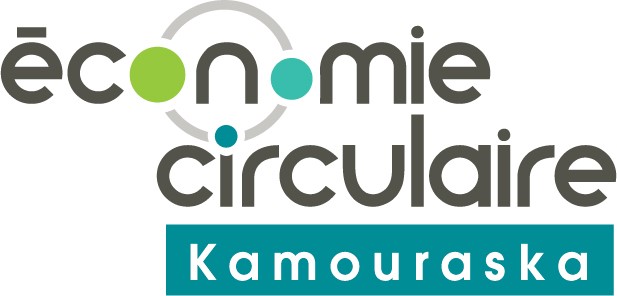Over the last few years, surveys have shown that the majority of Quebecers are deeply worried about climate change and want the government to focus more on this issue and put more efforts into reducing greenhouse gas (GHG) emissions.
Waste management is a major issue in this fight: landfills are overflowing and recycling centres can no longer manage the volume of incoming recyclable materials.
The SADC du Kamouraska has decided to attack the problem on this front, and to lead its region towards a sustainable circular economy. This is an economic model that calls for rethinking our modes of production and consumption in order to reduce the use of resources and maximize the useful lifespan of each resource.

This ambitious project, launched in 2013, focused initially on gathering participants in order to create an ecosystem that contained businesses from all sectors, institutions, research centres and municipalities, along with economic development stakeholders. The goal was to encourage discussion and the sharing of knowledge and expertise.
Thanks to presentations, training sessions, conferences and personal telephone calls, interest in the project grew. An industrial symbiosis was launched in early 2016, led by the SADC in collaboration with well‑known partners including Bombardier Transport’s La Pocatière plant and Biopterre. Within this network, led by a coordinator, the waste products from one business become the raw material of another. More than 70 businesses and organizations are currently part of the network, where they trade hours of equipment use as well as wood from shipping pallets, mineral waste, fabric scraps, and much more. The results are tangible. Some numbers from the last three years:
- 71 institutions, businesses and industries involved
- 57 exchanges carried out involving 881 tonnes of material
- 551 tonnes of waste diverted from landfills
- 608 tonnes of GHG avoided
- $116,000 of direct savings for participating businesses
Perlite Canada, a business in St-Pacôme that primarily produces perlite for horticulture, is now transforming its rocky by-products into road abrasives—more than 100 tonnes of it were used on Kamouraska’s roads this winter!
Similarly, Groupe Gibo—a St-Pascal manufacturer of furniture, home furnishings and upholstery—is recycling its waste polyurethane foam by returning it to its supplier, who turns it into anti-fatigue mats. As a bonus, the supplier’s truck returns with this waste as cargo. The result: 80 fewer tonnes of CO2 in the atmosphere every year, and nearly $20,000 in savings for the company. Interestingly, it was the employees who first spoke up about their discomfort with throwing away so much material. “The sustainable development measures implemented by the company’s leadership have attracted workers and helped to retain them, as well as strengthened their collective pride,” said Anik Briand, Executive Director of the SADC. “To top it off, they won a prize for creating 30 jobs in 2018.”
Above all, Kamouraska’s circular economy is a process of innovation. For example, Biopterre is testing mycotechnologies that involve strains of fungus capable of decontaminating wood of particles such as melamine, allowing the wood to be used for other purposes.
The SADC has set its sights on encouraging the repair of objects and devices, in order to extend their lifespan. This includes making sure that new repair companies can appear and existing ones can stay in business, and promoting repair as an alternative to consuming new products.
The SADC du Kamouraska’s circular economy initiative has so far proved promising. Besides the economic and environmental benefits, the project has garnered international interest. It was a finalist for the prestigious Place Marketing Awards in the Economic Development category, bringing recognition to the whole region.
